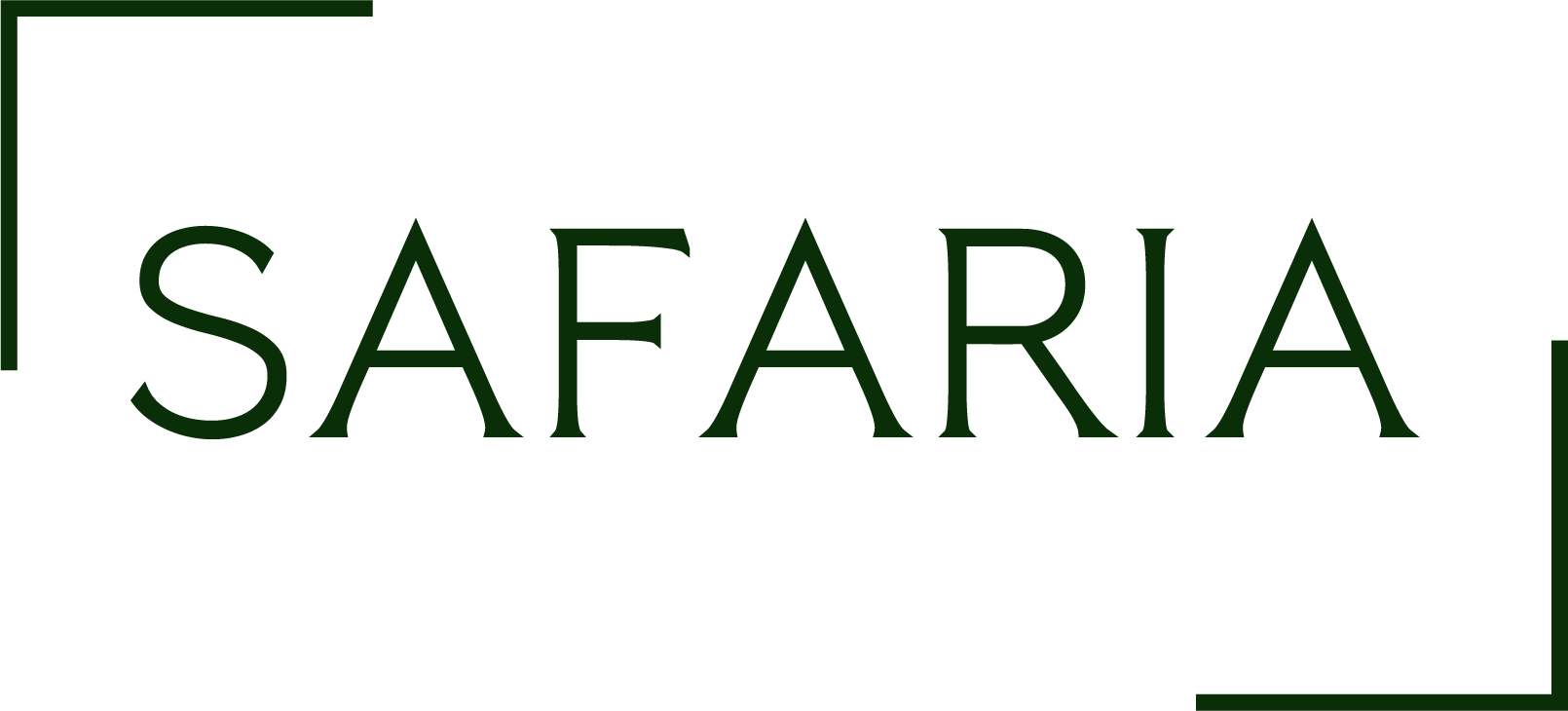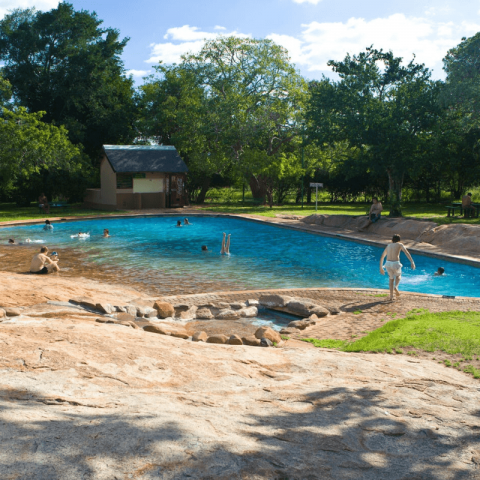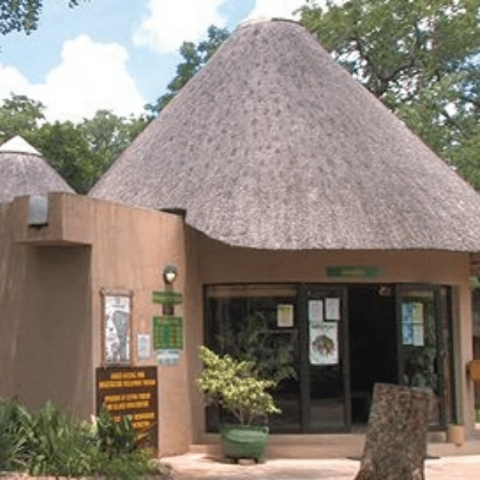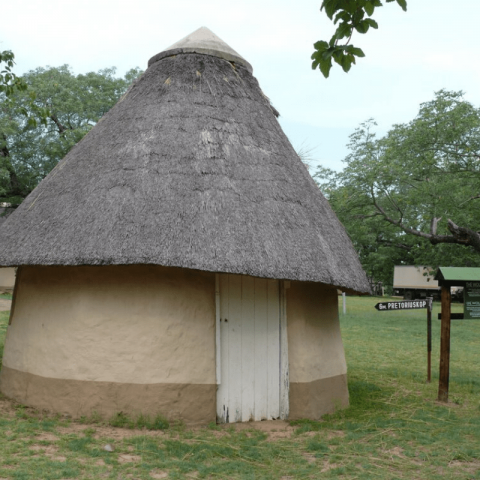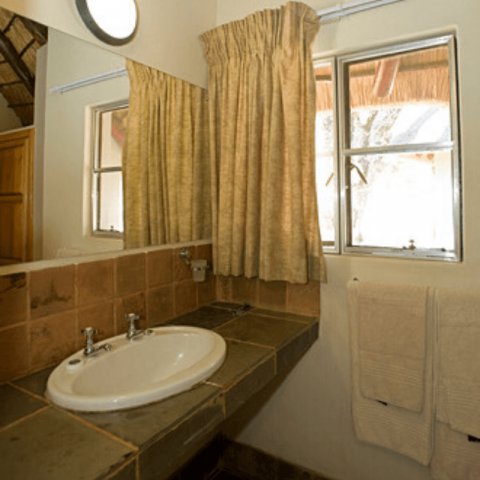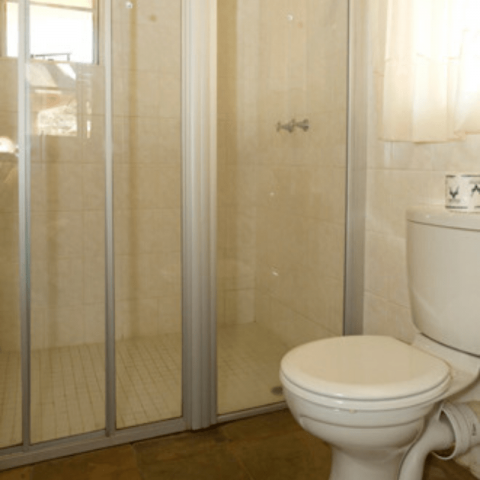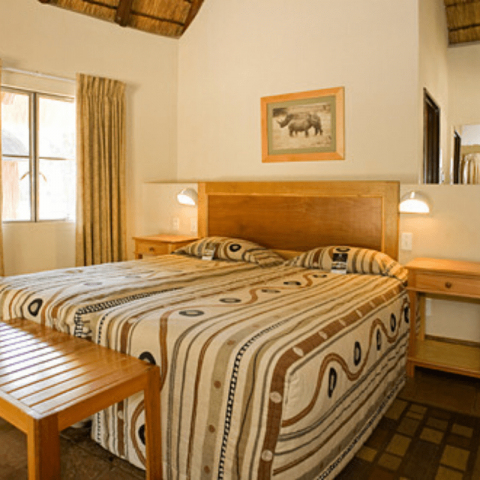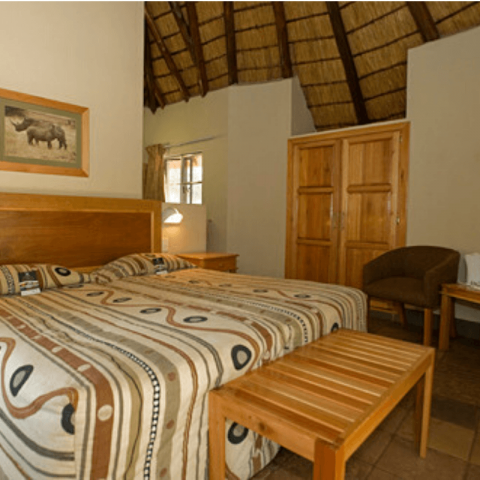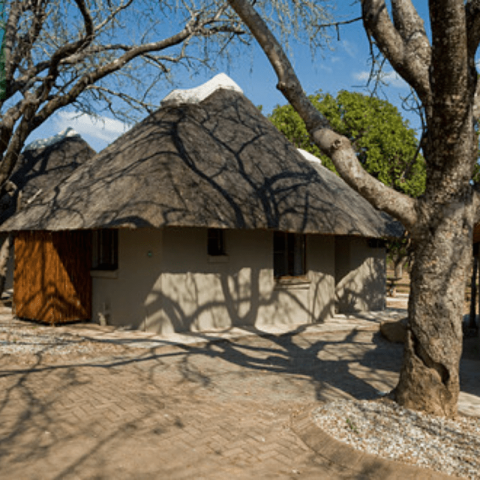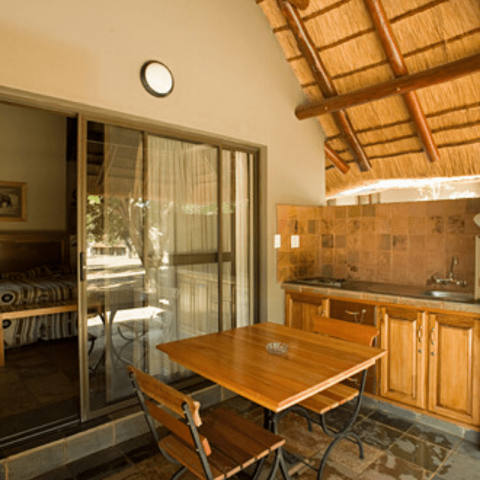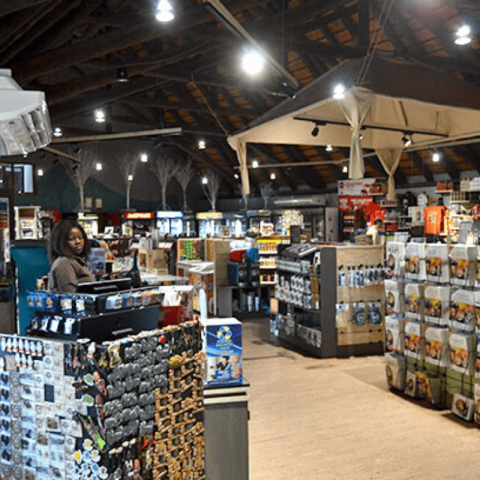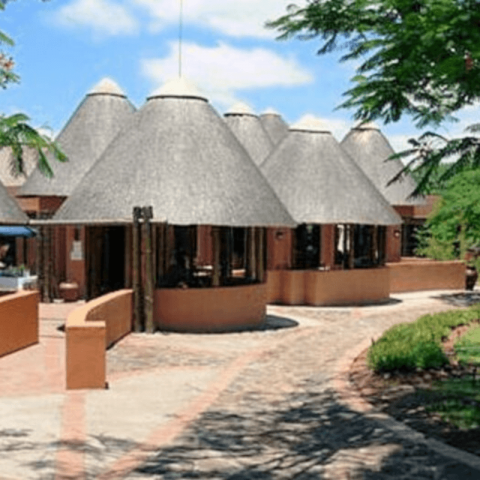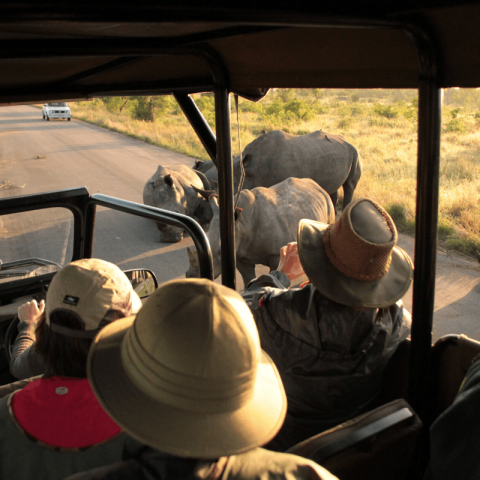[breadcrumb]
Pretoriuskop Camp
This camp is situated in the South Western corner of the park and is a mere 9km from Numbi Gate. Pretoriuskop is the oldest camp in the Park and has been open to visitors for over a century. With the highest annual rainfall and altitude in the Park, the camp is surrounded by a green barrier that is wonderful for birding with an abundance a large green trees. Its the only camp where early exotic plant species such as flamboyant trees have been kept in accordance with it historical value. The birdlife is prolific and offers the avid birder several species that wont be found anywhere else in the Park. The Camp offers guests an opportunity to venture along the Sable Trail within the camp hopping from granite boulders to large marula and mahogany trees with tit bits of information.
The underlying geology of the Pretoriuskop region is Granite which is deemed to be sour-veld with lower pH and high acidity levels. The result is large bare granite domes with tall hardy grasses and woodland dominated by terminalia and sickle-bush.
During the summer the grasses are high and the game visibility fairly low with thick woodland encroachment. During the winter the views are endless but route burns may result in certain areas looking charred and lifeless.
Key Mammal species in this area include :
- Sable
- Lichtenstein Hartebeest
- Cheetah
- Lion
Key Bird species in this area include :
- Gabar Goshawk
- Rest crested Korhaan
- Ground scraper thrush
- Dusky Lark
- Lizard Buzzard
History of the Camp :
Pretoriuskop Camp is one of the oldest rest camps in Kruger National Park, which is located in northeastern South Africa. The camp is named after Willem Pretorius, who was a Voortrekker leader and the first elected president of the South African Republic.
The history of the camp dates back to the early 1900s, when the Kruger National Park was first established as a protected area to conserve the wildlife and habitats of the region. At that time, there were no tourist facilities in the park, and visitors had to bring their own camping gear and supplies.
In 1926, the park authorities decided to build a permanent camp for tourists, and Pretoriuskop was chosen as the location due to its scenic setting and proximity to wildlife-rich areas. The camp was designed by the park's first ranger, James Stevenson-Hamilton, and construction began in 1927.
The initial buildings in the camp were made of wood and thatch, and included accommodation units, a restaurant, a shop, and a petrol station. Over the years, the camp has undergone several renovations and upgrades, with more modern facilities and amenities added to meet the changing needs of visitors.
Today, Pretoriuskop Camp is a popular destination for tourists to Kruger National Park, offering a range of accommodation options, including chalets, cottages, and camping sites. The camp is known for its beautiful gardens, which are home to a variety of birds and small mammals, as well as its prime location for wildlife sightings, including the famous Big Five animals (lion, leopard, elephant, rhino, and buffalo).
The Camp Accommodation :
Campsites
- 45 x tent or caravan sites, with or without power point. Communal ablutions and cooking facilities. (24-hour boiling water, electric hotplates and washing up facilities) Maximum of 6 persons per site.
Huts
- 30 x rustic 2, 3, 5 or 6-bed units with ceiling fan and communal ablution facilities. There are no cooking utensils, crockery or cutlery, but a communal kitchen with scullery and electric hotplates is available.
- 46 x rustic 2, 3, 5 or 6-bed units with communal ablution facilities. There are no cooking utensils, crockery or cutlery, but a communal kitchen with scullery and electric hotplates is available. Equipped with fridge and air-conditioning.
Bungalows
- 52 x 2, 4 or 6-bed units. Units are equipped with ablutions (most with showers, but some with baths) and air-conditioning. Some have both hotplates and sinks. You have a choice of kitchenette or communal kitchen, as well as with or without perimeter view. A limited number of fully equipped utensil boxes (cutlery, crockery, glasses and frying pan) are available for hire. (Confirm when booking if you would like a choice of double or single bed).
Family Cottages
- 4 x 6-bed units (3 bedrooms with 1 double bed and 4 single beds) with well equipped kitchens, air-conditioning and living rooms. One bedroom has a bathroom en-suite (bath, toilet and washbasin) and there is a separate toilet, shower and washbasin for communal use. The kitchen has a gas stove (with oven), fridge/freezer combination, sink, cooking utensils, crockery and cutlery.
- 1 x 4-bed units (2 bedrooms with 1 double bed and 4 single beds) well equipped with air-conditioning, kitchen and living room. One bedroom has a bathroom en-suite (bath, toilet and washbasin) and there is a separate toilet, shower and washbasin for communal use. The kitchen has an electric hotplate, fridge/freezer combination, sink, cooking utensils, crockery and cutlery.
Guest Houses :
- These are large luxury units in prime positions inside the camp. There are well-equipped kitchens (with microwave ovens) and multiple bedrooms and bathrooms (some with showers and baths, others with baths only). Bedrooms are housed in separate units from the main living area. TVs with limited DSTV channels are provided.
- Pierre Joubert: Sleeps 16, with 4 bedrooms (2 single beds plus 2 bench beds in each room)
- Doherty Bryant: Sleeps 9, with 3 bedrooms (1 double bed and 1 single bed in each room).
Accommodation at Pretoriuskop Rest Camp caters to a variety of guest requirements. Choose anything from luxury, self catering, caravanning or camping accommodation for your stay in the wilderness. Why rush? Stay longer!
